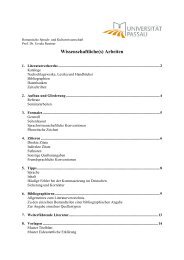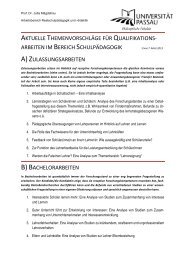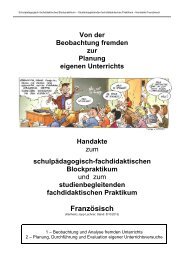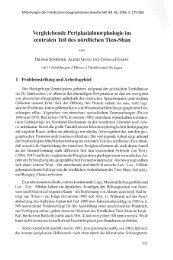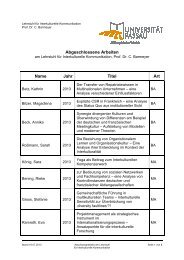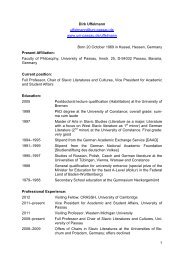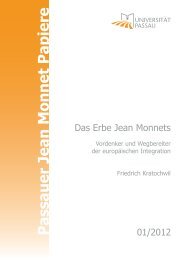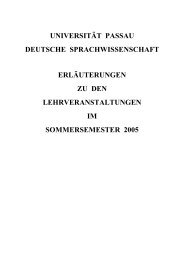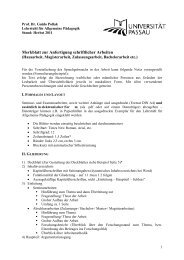The attempt to adopt a mixed-member proportional election system ...
The attempt to adopt a mixed-member proportional election system ...
The attempt to adopt a mixed-member proportional election system ...
You also want an ePaper? Increase the reach of your titles
YUMPU automatically turns print PDFs into web optimized ePapers that Google loves.
43<br />
threshold, and did not mention the single/multi-<strong>member</strong> constituency issue) (CDA<br />
29:129f.). Wichai Rueankroengkunlakrit proposed a similar model, namely 400 constituency<br />
MPs elected in multi-<strong>member</strong> districts, and 80 party list MPs (CDA 29:146).<br />
Earlier, Karun had insisted on his model of representation in the form of “occupational<br />
groups according <strong>to</strong> their <strong>proportional</strong> share of the population” (CDA 29:118). This<br />
would have lead <strong>to</strong> a dramatic change in the occupational backgrounds of MPs, because<br />
the dominance of businesspeople in the House would have been broken.<br />
After the <strong>member</strong>s of CDA and CDC had finished a one-hour dinner break,<br />
the proceedings resumed at 18:40. <strong>The</strong> chairperson of the CDA, Noranit Setabutr,<br />
noted that they had had a wide debate already. <strong>The</strong>refore, the CDC should provide its<br />
summary (in preparation for taking votes on contentious issues). Atchaphon Charuchinda<br />
posed the seven issues as follows (CDA 29:167f.).<br />
1) <strong>The</strong>re should be two <strong>system</strong>s, namely constituency and <strong>proportional</strong> (he<br />
combined “<strong>proportional</strong>” and “party list” by referring <strong>to</strong> rabop satsuan<br />
baep banchi raichue, approximately “the <strong>proportional</strong> <strong>system</strong> of the partylist<br />
kind”).<br />
2) <strong>The</strong> original proposal of the CDC regarding the number of constituency<br />
MPs was 320. However, the committee had no objections against increasing<br />
this number <strong>to</strong> 400, as advocated by many speakers.<br />
3) <strong>The</strong>re should be single-<strong>member</strong> districts.<br />
4) <strong>The</strong>re should be 80 “list” MPs.<br />
5) <strong>The</strong>re should be eight provincial groups with 10 list MPs each.<br />
6) As for the counting of the PL votes, it should be done only for candidates<br />
on the party lists, without taking in<strong>to</strong> consideration the constituency<br />
results.<br />
7) <strong>The</strong>re should be two ballot papers, as in 1997.<br />
<strong>The</strong>se were the seven points for which decisions would have <strong>to</strong> be made.<br />
<strong>The</strong> first question that arose was whether, in fact, everybody agreed with having two<br />
kinds of MPs. Atchaphon therefore noted that some groups still wanted only constituency<br />
MPs. In a comment that indicated the hidden dynamics of this exercise in Thai<br />
constitution drafting, Somkiat Rotcharoen remarked that there were not so many<br />
people present in the chamber at this point, because negotiations for compromise solu-




